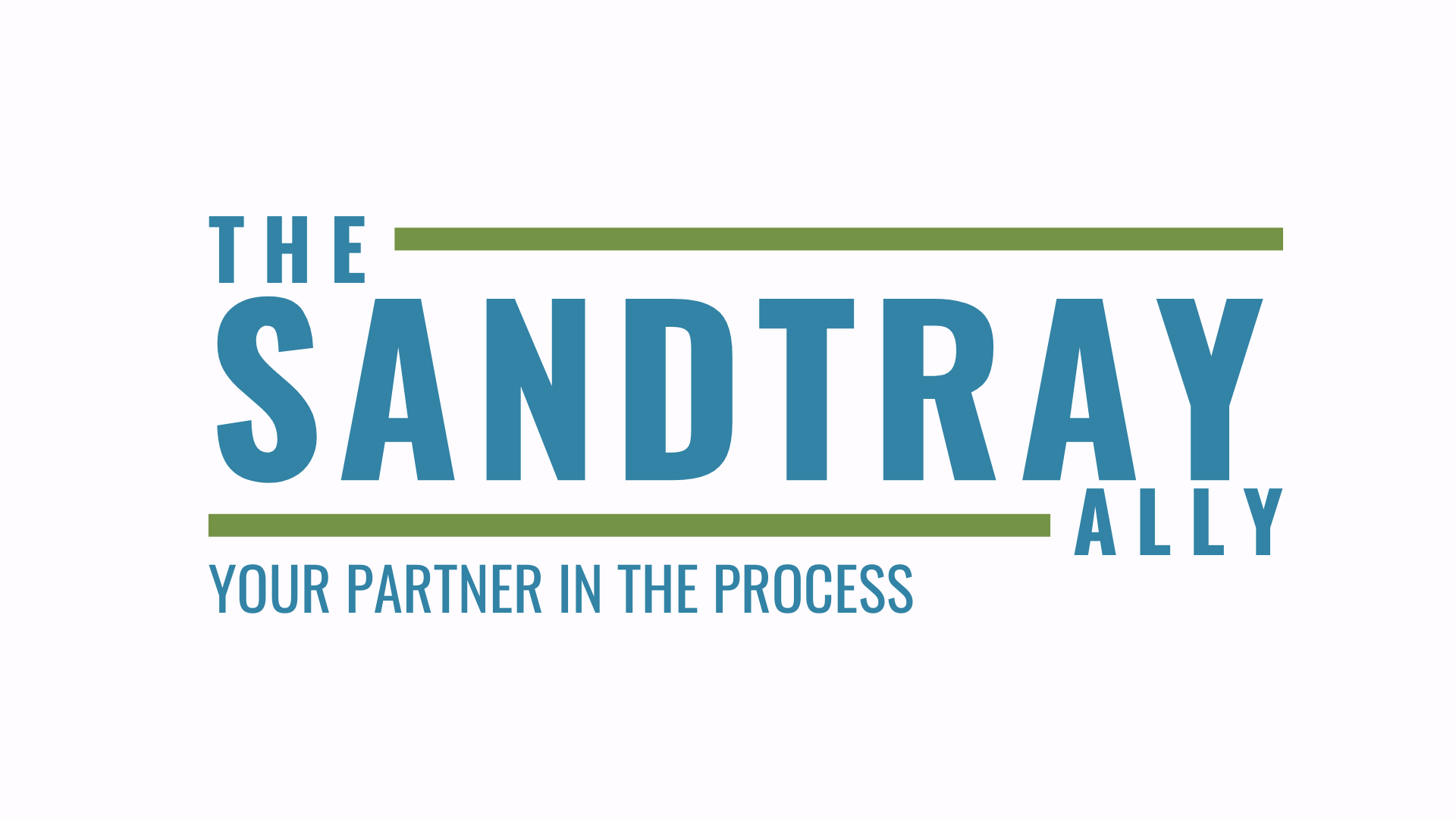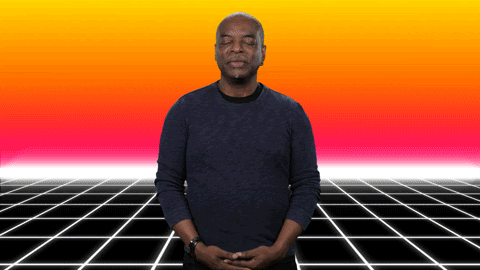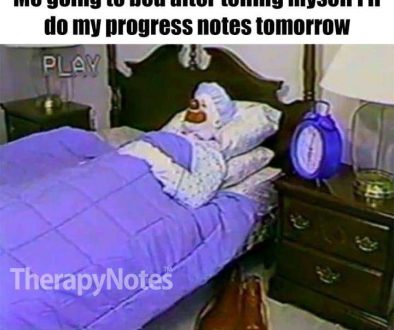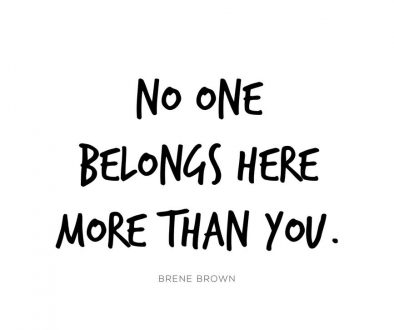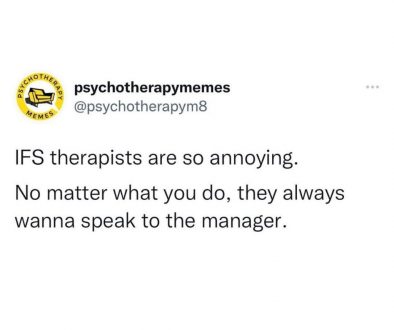Whaa??? We're already at our 40th edition of the Sandtray Ally??? Ya'll! This means we are coming up on 2 years in the very near future of what was once a tiny speck of an idea to what is now a regular thing that you all seem to resonate with - and I'm HERE FOR IT. You may be shocked (or not, I dunno) to know that I spend pretty much the entire week leading up to the Ally landing in your inbox THINKING and THINKING about YOU. Well, maybe not YOU individually (that may weird you out a bit - I mean I'm not Penn Badgley) but YOU, as in all of the Sandtray Ally readers. My goal each edition is to be open and vulnerable as I can (it's F'N hard) and also share how sandtray can help us all heal. So the theme this week is feeling the feelings. This week I've been on the struggle bus with feeling all the feelings. Since I've made a SUPER concerted effort to eat clean, work out, blah blah blah - all the things to be the most healthy version of me, I've lost my #1 coping skill - FOOD. So what this means now is that I have to FEEL all the things. Feeling overwhelmed with trauma from clients? YOU GOTTA FEEL IT. What about stress from juggling clients/trainings/health/self-care/marriage? YOU GOTTA FEEL IT. Or just the ol' when is this pandemic ever going to end and how do I deal with the constant unknown? YEP, YOU GOTTA FEEL THAT TOO. And although I preach to my clients about how important it is to feel the feelings (just like Brene Brown taught me), it becomes excruciating when it's ME in the chair. So today, I'm going to share stories from around the horn about how to feel your feelings, why it's important, and even techniques to help our clients.
In addition to each resource, I'll also provide a sandtray tip or directive to help implement this information with clients AND yourself! 1. How to feel your feelings and how it will change your life Yeah, I started off with the heavy-hitter here. A huge topic but also a well-written and helpful article for all of us AND clients. I LOVE this because it provides a personal but practical guide of how to feel your feelings. As therapists, we likely KNOW these somewhat simple concepts, but to FULLY put them in place is an ENTIRELY different matter. To what 'simple' concepts am I referring? Things like... - processing your feelings sucks at the time but it's liberating on the other side - being an empath (like most of us are) means we carry a lot that ISN'T OURS to carry - every feeling has a message, we just have to listen without judgment - feelings don't last forever. If we wait just a bit, our feelings will shift on their own. It may FEEL like forever when you're in the middle of an emotional storm and you can't take it, but YOU CAN. Again, GOOD STUFF. Sandtray tip: Practice feeling your feelings through doing your own sandtray at least once a month (more for bonus points). Do a simple tray with the directive of "What am I feeling at this moment?" and then just listen, cry, celebrate, and learn. 2. Feeling feelings is a skill - and you can learn it! This article is actually written for teens, but it's amazing info for anyone at any age. I often forget that building emotional literacy and understanding doesn't stop when you finish grad school; it truly is a life-long process (and a daily one at that). Here's 3 ways to build emotional awareness - for both us as therapists and our clients - Make a habit of tuning into your feelings regularly. We often tend to focus just on the high highs and low low's. But, in order to learn how we feel and truly experience our lives (rather than going on autopilot) we must be curious. Not easy, but worth it. - Rate how strong the feeling is. Furious is different than irritated. But, even if you can only think of "I'm mad" in the moment, rate how mad you are. This tool helps all of us really get a grasp on our feelings so we can communicate it. - Share your feelings with those closest to you. Again, we know this and teach it but how many of us REALLY do it?? After training many many sandtray therapists throughout the in-depth ICST trainings, I know many therapists feel so alone and lack safe people in their lives. Don't have a person you can trust just yet? Do a sandtray yourself and journal as a way of processing it. Sandtray tip: Break the different emotional words into directives with your clients, no matter their age. For example, have the client make a tray about furious or one about envy. You may be surprised (or not) how many clients lack emotional vocabulary beyond sad, mad, and happy. Sandtray tip #2: Direct your client to make a tray about what would happen if they truly felt their feelings and were honest with themselves. Do the same for yourself. WARNING: This isn't a first session sandtray - use only when you've been working with the client for a while. 3. I have a good life. But what about all of those who don't? I feel their pain too. The news out of Afghanistan has been heart-breaking from a humanitarian viewpoint if nothing else. As empaths, we often FEEL everything and it's EXHUASTING. Pandemic/decision fatigue is a real thing but so is guilt that we have the privilege of making a decision - many don't all around the world. We struggle with understanding how we, as one person, can make a difference or even ignite joy when suffering seems to be raining down. Read the article linked above - the author paints a powerful picture of how we can shift our perceptions and expectations to handle all of the mixed bag of emotions that comes from having a 'good life.' Sandtray tip: Make a tray about what you need to do to find joy in your life. Make it into small, tiny goals so you can identify just one way to cultivate a spark of joy in your life, even if things seem dismal all around. And then. Do it again. And again. And pay attention, journal, or process how your emotions shift. 4. Americans struggle with renewed Pandemic anxiety Remember early in the summer, maybe around June, when things were looking up? Many of us were excited about life returning back to normal, being able to see family and friends again, and just feeling, dare we whisper it....hope? Yes, me too. But, the reality is now that many of us are struggling again with what to do now that the pandemic seems to be hanging around. One doctor even referred to it as "emotional whiplash" Remember, just as we discussed a couple of issues ago - sustained, unpredictable stress leads to the brain reacting much like a person who has insecure attachment and/or a severe trauma history. Our embodied brain just doesn't have much to give. What does this mean for us? How do we feel our feelings when it seems like 'what's the use?' - We acknowledge our feelings. Remember - we don't shame them or go into "I shouldn't feel this way." Feelings are just that - feelings. When we recognize and call them out, they become less powerful. - Know that mourning is part of this process. We're mourning the life we had before the pandemic lens was in place with every facet of our lives. Calling it what it is - a mourning process - helps us not feel 'crazy' or ashamed for not just bouncing back. - Get the fear out of the drivers seat. Easier said than done I know. But, if we acknowledge the fear out loud, it loses it's power. In addition, we also have the possibility of using our cortex to take steps to do what we can to make the controllable parts of our lives better. Sandtray trip: Split the tray into two parts: On one side, make a tray about your life pre-pandemic and then on the other side, make a tray about what life is like now. Focus on those things that haven't changed (such as love for your family) and also note those things that you are mourning. Do this for yourself and for your clients who may be struggling with this 'new normal.' | 